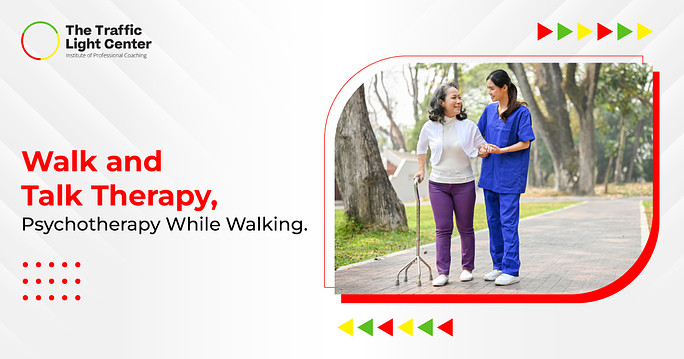Walk and Talk Therapy, Psychotherapy While Walking

Mindfulness-inspired walking therapy is becoming increasingly popular. Many studies attest to the therapeutic effects of physical exercise, and we know that physical activity contributes to the well-being of the body and mind; regularly mobilizing your body helps reduce anxiety and can also prevent depression.
So Why Not Combine the Two: Walking and Psychotherapy?
When you are focused on your difficulties, you are sitting most of the time. You think long and hard until you feel overwhelmed and stuck in the problem. Walk-and-talk therapy at least gets you off the shrink’s couch (or yours)!
Indeed, she addresses the patient’s demands by putting him into action by acting physically; he is no longer fixed; he walks and undertakes.
The combination of walking and psychotherapy, therefore, has quite interesting advantages.
Being in contact with natural environments leads to a reduction in stress (measurable in particular by a slowing of the heart rate and a reduction in blood pressure). Indeed, simple exposure to a natural landscape in a photograph or by the window soothes and arouses a feeling of well-being, whereas urban scenes activate the brain areas of anxiety.
Thus, the brain seems to ruminate less in nature.
Why Does A Natural Environment Protect Against Depression?
In this regard, in 2015, Grégory Bratman wondered why a natural environment protects against depression and anxiety disorders. They showed that a 1h30 walk in nature leads to a decrease in the activity of the ventromedial prefrontal cortex, a brain area associated with reflection and self-focus and, therefore, with the omnipresent negative ruminations in people who are going through an episode of depression. The researchers carried out an evaluation of the depressive state of the subjects through psychological questionnaires, and they confirmed that at the clinical level, ruminations decreased after this walk.
Walk In Nature with a Therapist.
In addition, walking in nature with a therapist is conducive to training to evolve into full consciousness. A walk in the forest, for example, is a very immersive context. In the middle of the trees, nature gives itself entirely to see, smell, hear, to touch. The landscape, the rustling of the foliage, the sound of the wind, its freshness in your clothes, the crackle of twigs under your feet, the chirping of birds, the grass waving around your calves, and the tree trunks that go far and high in the sky and repeat themselves endlessly.
Anchored in this multisensory experience, the patient becomes more easily aware that the difficulty mentioned in therapy is one element among others constituting his world: the natural environment amazes and quickly arouses the feeling of being part of a whole. Its reality is no longer restricted to the problem, and it also opens up to the knowledge of the mechanics of the body, which can go well, to the relationship to the environment, to other encounters too; the resources emerge slowly, at the rate of the consultant’s need, just like walking, secondary to the therapeutic conversation.
Walk and Talk Therapy Is Not For Everyone.
Walk, and Talk Therapy is not suitable for everyone, of course, and is not possible in all contexts, but it is an original type of consultation that can have very beneficial effects on certain problems.
The advent of online therapies questions what constitutes the essence of a therapeutic relationship. Does the latter require a meeting and a physical presence? Are traditional practices transferable as they are from the physical world to the virtual world?
Dr. Wendy M. O’Connor is among the famous Relationship and Marriage Counseling Therapists in Los Angeles, California. If you are looking for the Best Psychotherapist in Los Angeles




